1. Find the golden area on the watermelon peel
The yellow area on the watermelon is the area in contact with the ground. Choose a watermelon that has a large yellowish-white area on the skin. Because that is a ripe watermelon.
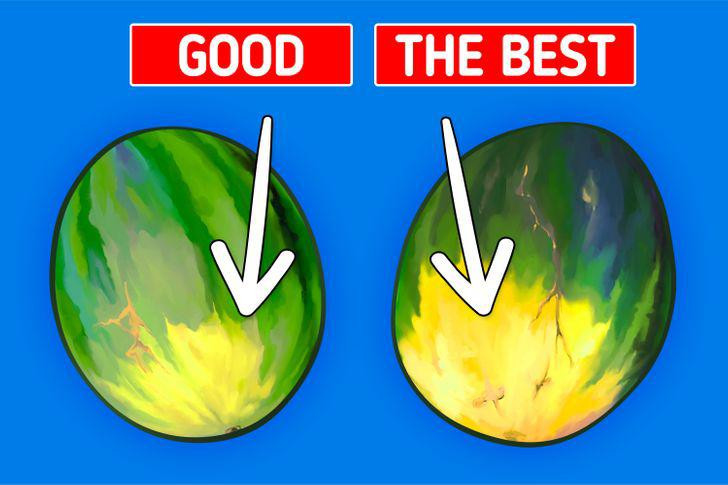
The larger the yellowish-white area (on the right), the more ripe the watermelon.
2. There are many lines like belts on the yellow part of the watermelon peel
The more lines like belts and brown spots on the watermelon peel, the sweeter the watermelon. Because this is the part where bees touch when pollinating.
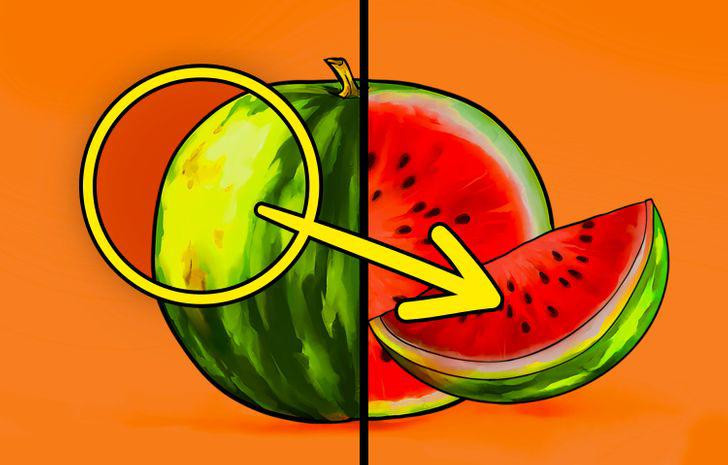
The more brown spots on the yellow area and lines like belts, the sweeter the watermelon.
3. How to choose watermelon with more water or sweet watermelon
Watermelons that are longer and larger in size contain more water. Whereas smaller and rounder watermelons will be sweeter. It’s up to you to choose whether you prefer more watery watermelons or sweeter ones.
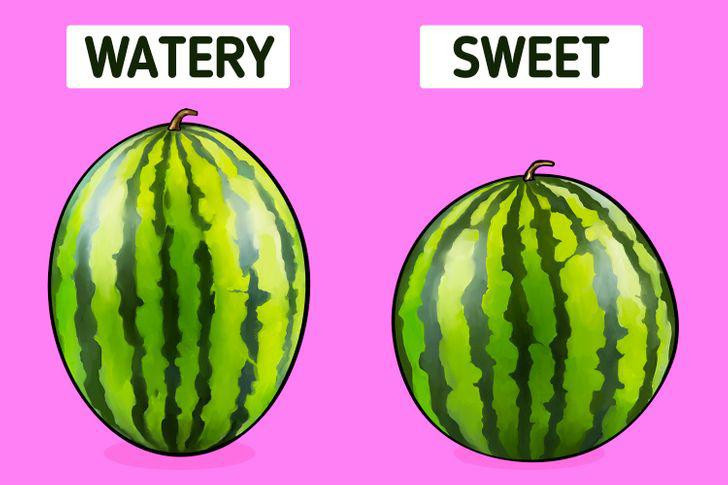
4. Buy watermelon of the right size
In addition, watermelons of the right size but with the heaviest weight are the best-tasting watermelons.
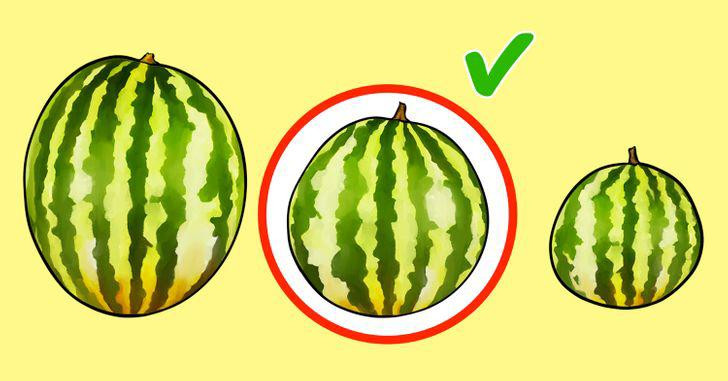
The medium-sized watermelon with the heaviest weight is the best-tasting watermelon.
5. Shriveled watermelon stem
A shriveled watermelon stem means the watermelon is ripe. But note that the stem must shrivel uniformly from top to bottom. If the stem is still green, it means the watermelon was harvested early before it had a chance to ripen. You should also avoid buying watermelons with curved stems.
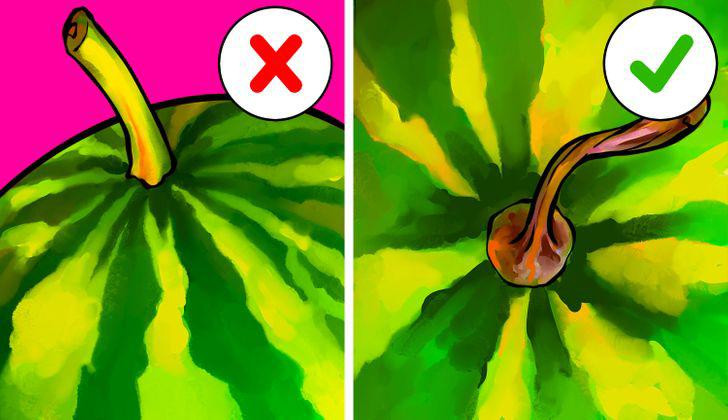
The watermelon is harvested when it is ripe, the stem shrivels uniformly from top to bottom.
6. Fold your fingers together and tap on the watermelon peel
When you tap the watermelon, choose one that is firm and solid. But if the sound is weak, the flesh of that watermelon may be soft and starting to spoil.
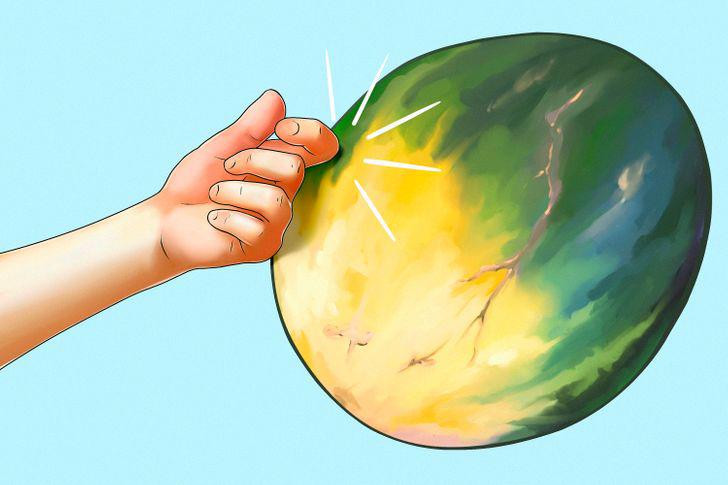
The sound when tapping on the watermelon peel must be firm and solid to be delicious.
According to Family & Society

































